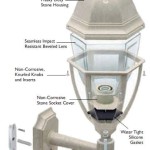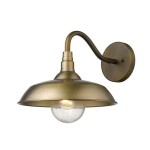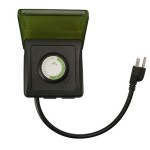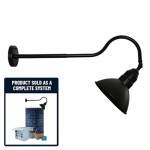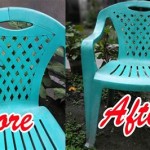Troubleshooting an Outdoor Propane Heater That Won't Light
Outdoor propane heaters extend the usability of patios, decks, and outdoor spaces during colder months. However, a common frustration arises when the heater fails to ignite. Several factors can contribute to this problem, ranging from simple issues that can be resolved quickly to more complex malfunctions requiring specialized attention. Understanding the possible causes and implementing systematic troubleshooting steps can help resolve many no-light situations.
Key Point 1: Fuel Supply Issues
The most frequent cause of an outdoor propane heater refusing to light is a problem related to the propane supply. This can manifest in several ways, including an empty or nearly empty propane tank, a malfunctioning regulator, or a blocked gas line. Addressing the fuel supply should be the first step in diagnosing the problem.
Begin by verifying the propane tank's fuel level. This can be done by feeling the tank's weight or using a propane tank gauge. If the tank feels light or the gauge indicates a low fuel level, replace the tank with a full one. Even if the tank isn't completely empty, a low fuel level can sometimes cause insufficient pressure to properly operate the heater, especially in colder temperatures where propane vaporization is reduced. It's advisable to keep a spare tank on hand for uninterrupted use.
The propane regulator, typically attached directly to the tank, controls the flow of propane to the heater. It maintains a consistent pressure, which is crucial for proper combustion. A faulty regulator can restrict gas flow, preventing the heater from igniting. To check the regulator, carefully inspect it for any signs of damage, such as cracks, leaks, or corrosion. If damage is evident, the regulator needs to be replaced. Another test is to listen for a hissing sound when the propane tank valve is opened; the absence of this sound can indicate a regulator problem. It is often difficult to precisely diagnose a regulator failure without specialized tools, so replacement is often the most practical solution.
The gas line connecting the regulator to the heater burner can also become blocked, restricting propane flow. This blockage can be caused by debris, insects, or corrosion. Disconnecting the gas line and carefully blowing compressed air through it can often clear any obstructions. If the gas line appears damaged or corroded, it should be replaced. Ensure that the gas line is properly reconnected and tightened after cleaning or replacement, using pipe thread sealant designed for propane applications to prevent leaks.
Key Point 2: Ignition System Problems
Another common reason for a propane heater not lighting is a malfunction in the ignition system. Outdoor propane heaters typically use either a piezoelectric igniter or an electronic igniter. Both systems create a spark to ignite the propane gas, and failure of either system will prevent the heater from starting.
A piezoelectric igniter generates a spark when a button is pressed, compressing a crystal. If the igniter is not producing a spark, try pressing the button repeatedly and firmly. If no spark is visible or audible, inspect the igniter tip (the point where the spark is generated) for dirt or corrosion. Clean the tip with a small brush or fine-grit sandpaper. If cleaning the tip doesn't resolve the issue, the piezoelectric igniter itself may be faulty and require replacement. Replacement is usually relatively straightforward and involves disconnecting the old igniter and connecting the new one.
Electronic igniters use a battery to generate a spark. If the heater uses an electronic igniter, begin by checking the batteries. Ensure they are properly installed, have sufficient charge, and are free from corrosion. Replacing the batteries with fresh ones is often the first step in troubleshooting an electronic ignition system. If replacing the batteries doesn't work, inspect the wiring connections to the igniter for any loose connections or corrosion. Clean or tighten any loose connections. If the igniter still doesn't produce a spark, the igniter module itself may be faulty and need to be replaced. Testing the igniter module typically requires a multimeter to check for voltage output.
The igniter's position relative to the burner is also crucial. The spark must be close enough to the gas stream to ignite it. Check the igniter's position and, if necessary, carefully adjust its placement slightly closer to the burner. Refer to the heater's manual for the correct placement specifications.
Key Point 3: Pilot Light and Safety Features
Some outdoor propane heaters use a pilot light, a small continuous flame that ignites the main burner when the heater is turned on. Other heaters may use a direct ignition system, eliminating the need for a pilot light. If your heater uses a pilot light, ensure that it is properly lit and functioning. Also, safety features, such as tilt switches and flame sensors, can prevent the heater from operating if they detect a problem.
If the pilot light is not lit, follow the manufacturer's instructions for lighting it. Typically, this involves pressing and holding a pilot button while using a lighter or match to ignite the gas. Continue holding the pilot button for a specified period (usually 20-30 seconds) to allow the thermocouple to heat up and keep the gas valve open. If the pilot light goes out as soon as you release the pilot button, the thermocouple may be faulty and need to be replaced. The thermocouple is a heat-sensitive device that senses the pilot flame and allows the gas valve to remain open. A faulty thermocouple will prevent the gas valve from staying open, extinguishing the pilot light.
A dirty or clogged pilot light orifice can also prevent the pilot light from lighting or staying lit. Carefully clean the orifice with a small needle or compressed air to remove any debris. Be extremely careful not to damage the orifice during cleaning.
Many outdoor propane heaters have safety features, such as tilt switches, that automatically shut off the gas supply if the heater is tipped over. Ensure that the heater is on a level surface and that the tilt switch is not activated. Flame sensors detect the presence of a flame and shut off the gas supply if the flame is extinguished. A faulty flame sensor can prevent the heater from lighting, even if the igniter is working. Inspection and replacement of the flame sensor may be necessary if the heater continues to fail to light despite other troubleshooting efforts. Examine the heater for any internal damage or obstructions that could interfere with the flame sensor operation.
Addressing a propane heater that won't light involves a systematic approach, starting with the simplest potential causes and progressing to more complex issues. Checking the fuel supply, inspecting the ignition system, and verifying the operation of the pilot light and safety features will often lead to a resolution. Consulting the heater's manual for specific troubleshooting steps and diagrams is always recommended. If the problem persists after attempting these solutions, it is advisable to consult a qualified technician for assistance.
Regular maintenance, including cleaning the burner and inspecting the gas line and regulator, can prevent many of these issues and ensure your outdoor propane heater operates safely and efficiently. Keeping the heater covered when not in use will protect it from the elements and reduce the risk of corrosion and debris build-up.
Proper ventilation is crucial when operating an outdoor propane heater. Never use a propane heater in an enclosed space, as this can lead to carbon monoxide poisoning. Always ensure adequate airflow around the heater to prevent the build-up of dangerous gases. Follow all safety precautions outlined in the heater's manual to ensure safe and proper operation.
By understanding the potential causes of a propane heater refusing to light and implementing these troubleshooting steps, users can often resolve the issue without requiring professional assistance. However, safety should always be the top priority. If you are uncomfortable working with propane gas or electrical components, it is best to seek the assistance of a qualified technician.

Troubleshooting Az Patio Heaters And Replacement Parts

Troubleshooting Az Patio Heaters And Replacement Parts

Patio Heater Will Not Light

Patio Heater Not Working

Troubleshooting Az Patio Heaters And Replacement Parts

Flash Furniture Sol Patio Outdoor Heating Broe Stainless Steel 40 000 Btu Propane Heater With Wheels Commercial Residential Use 7 5 Feet Tall Com

Troubleshooting Az Patio Heaters And Replacement Parts

The 2 Best Outdoor Patio Heaters Of 2024 Reviews By Wirecutter

Vermont Castings Stainless Steel Propane Patio Heater Canadian Tire

Az Patio Heaters 48 000 Btu Hammered Broe Propane Heater Hlds01 W Cg The Home Depot
Related Posts
